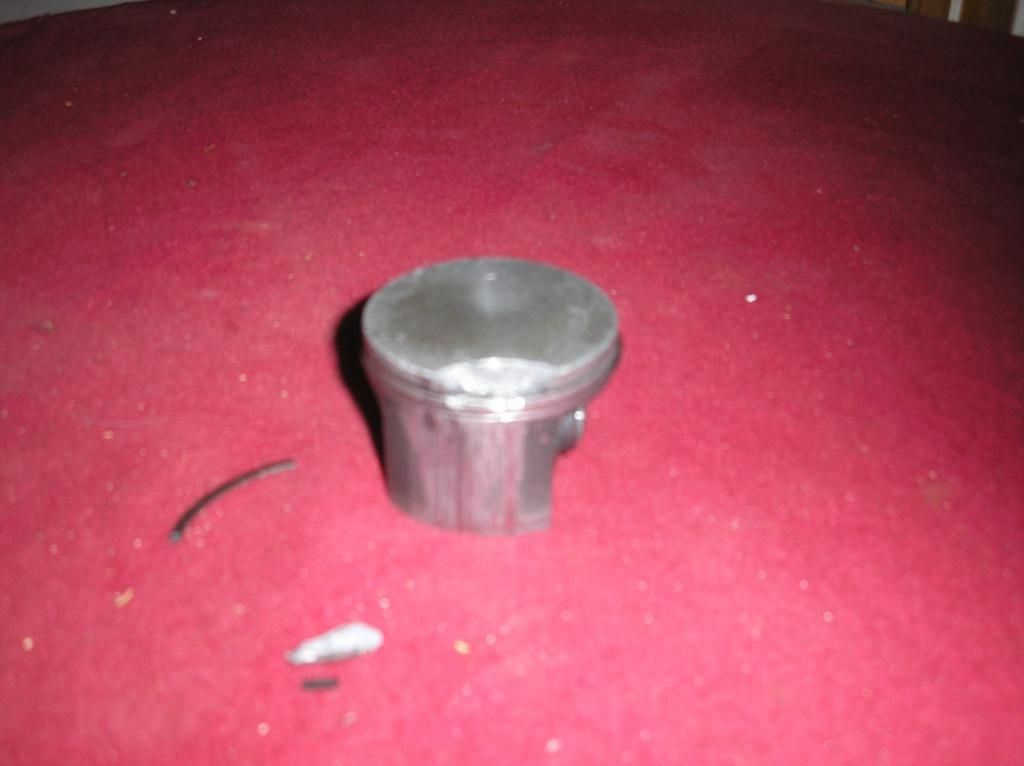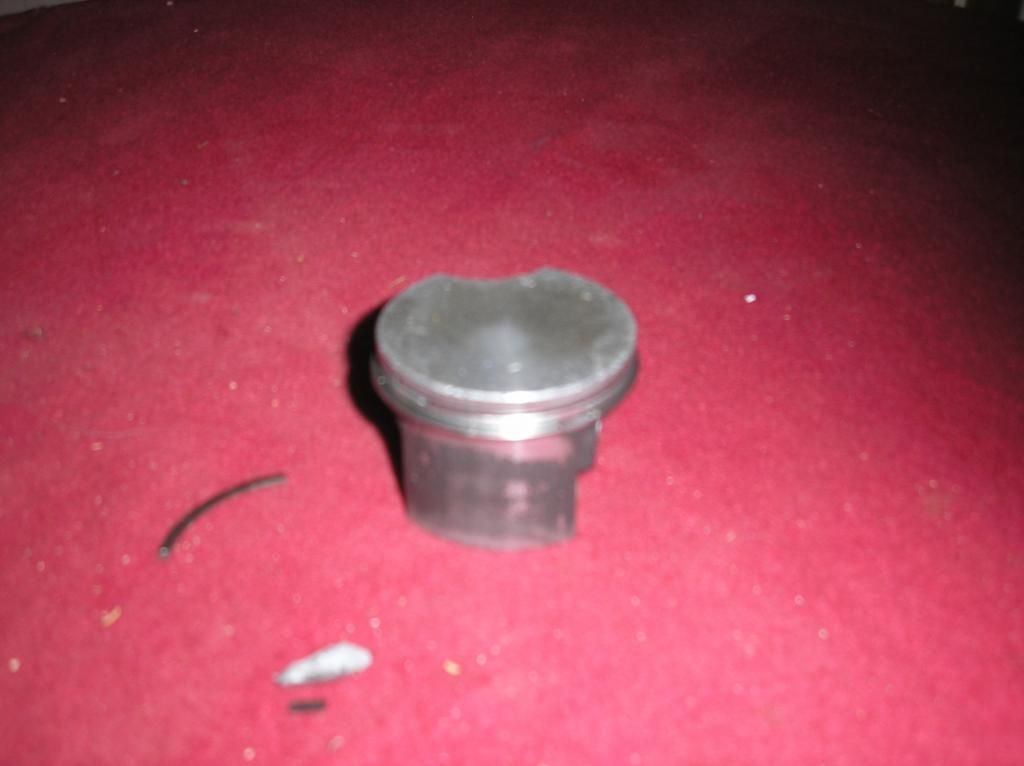Actually, I hated to post this. I rebuilt a 1997 Stihl 046 with a new cylinder kit. I imagine the saw had over 1000 hours on it before it gave up. Prior to my rebuilding, the saw would not even start and the compression was minimal. After rebuilding it, the engine started and ran flawlessly for me. I set the carb according to service manual specs. I checked it several times but not in the field under load with bar and chain. Fabulous compression and power. The owner, my good friend, then ran it for less than an hour while bucking large logs.
Then it stopped and he could not restart it. He gave it back to me the next day and I let it sit for a day. I started it and it ran for a few seconds, but it died suddenly. So, I took the muffler off and metal parts fell out--a collection of ring remnants and piston chips. One chip was huge in my book, bigger than any I had seen before. Here's a Pic of the exhaust side:

And here is the intake side:

Please pardon the focus. My camera is not the best. Rings were cracked in several locations and came apart. So, this piston and ring assembly died in less than an hour. Does anybody have any idea what happened here? Please advise.
Then it stopped and he could not restart it. He gave it back to me the next day and I let it sit for a day. I started it and it ran for a few seconds, but it died suddenly. So, I took the muffler off and metal parts fell out--a collection of ring remnants and piston chips. One chip was huge in my book, bigger than any I had seen before. Here's a Pic of the exhaust side:

And here is the intake side:

Please pardon the focus. My camera is not the best. Rings were cracked in several locations and came apart. So, this piston and ring assembly died in less than an hour. Does anybody have any idea what happened here? Please advise.




